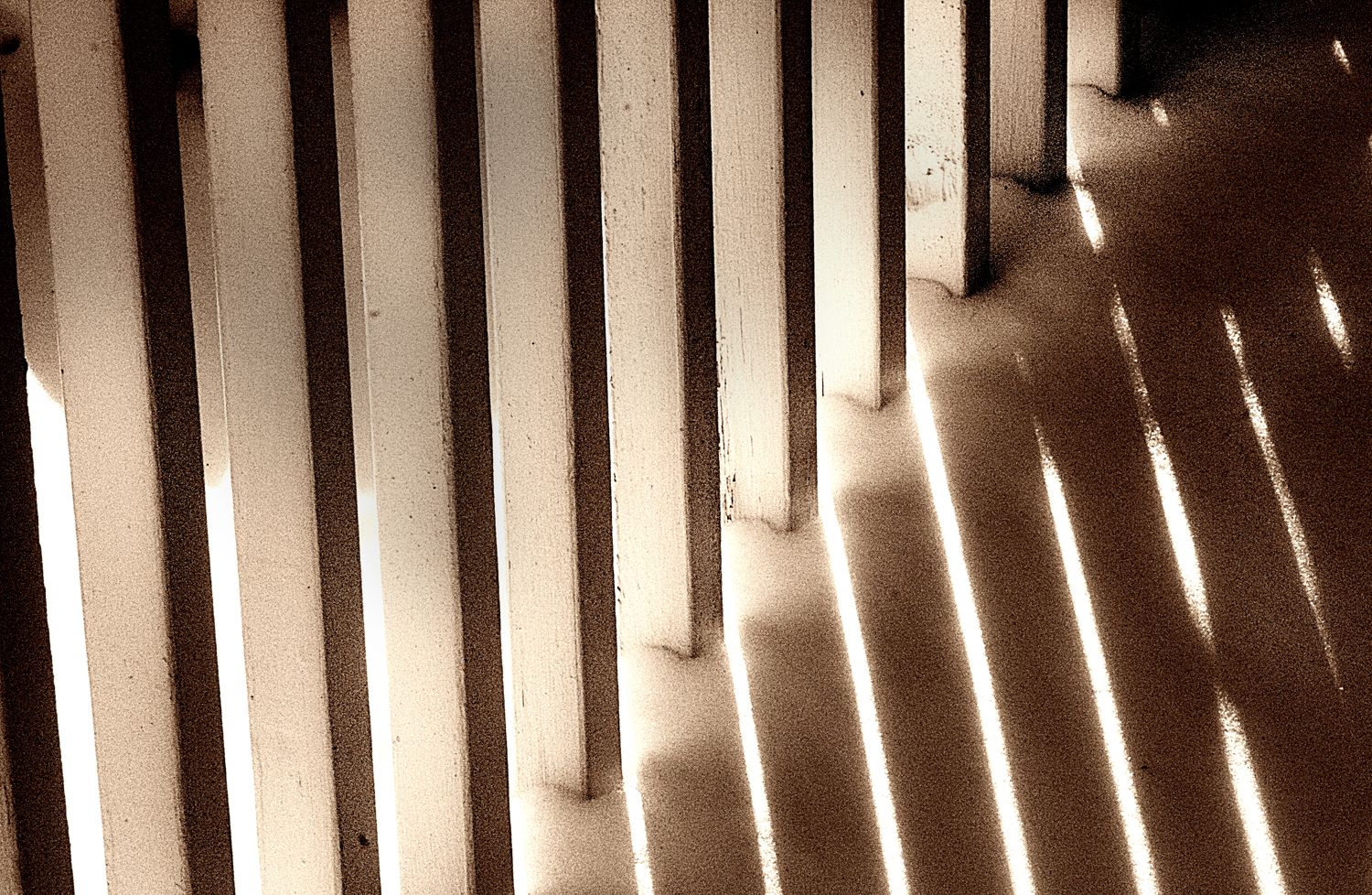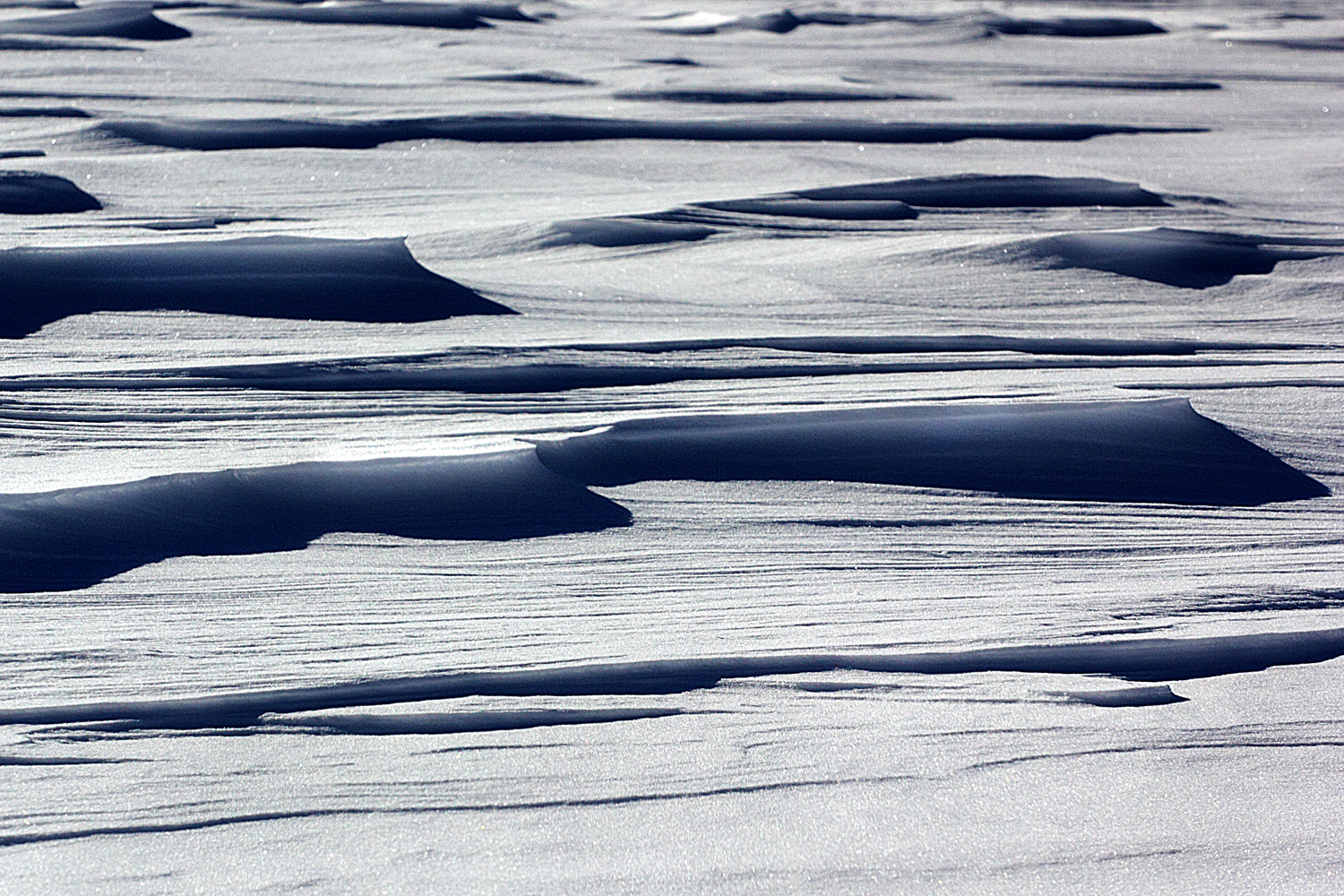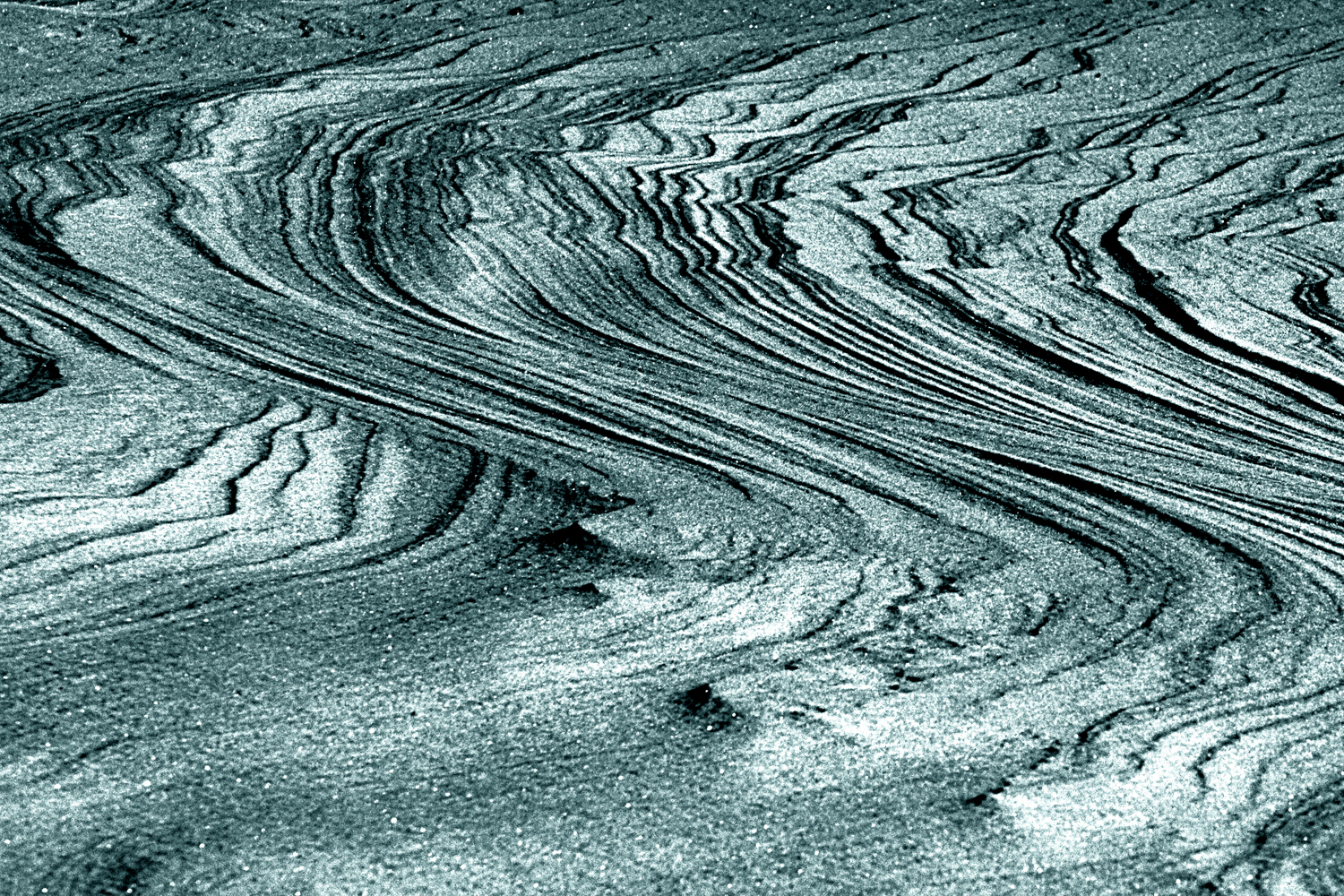The great blizzard of 2013 is fading into memory now. Within 48 hrs the pristine snow, in Boston at least, had acquired that yucky, sloppy, urban blackness. Fortunately, I got out early on the first two days and did some photography. Hopefully, you will find some of it interesting.
Snow is curious and nontrivial to photograph. I still have a lot to learn and have yet to truly achieve tone on tone. Rather I wind up defaulting to high contrast in the image, that is letting it range from black to white. I experimented with plus and minus on the exposure. In general you wind up with double peaked histograms. If you photograph the snow alone the dynamic range is tight and the images can become very high contrasty and abstract, if you equalize the histogram.
Today I’d like to focus on what I call geometrics. The first (Figure 1) is an image of hand-railing slats projecting deep shadows on a pristine alabaster and flat snow bed, whicj is the deck of a front porch. You tend to think of snow as cold, which would suggest blue/green toning as preferred, but here I chose a deep sepia tone and like the effect.
The second (Figure 2) is an image of wind blown peaks on a field of snow. Strong wind defines a blizzard and the effects can be abstract and very pleasing. I’m really drawn to this kind of subject matter – nature’s abstractions. Here a subtle and colder blue/green toning seemed best.
Another, wind effect are the beautiful undulating waves seen in Figure 3. Again a cold blue/green tone seemed most appropriate. The image required a lot of cropping. The effect seems to me very abstract and mysterious. Snow would not be what first comes to my mind if asked what I am looking at. It might as easily be sand or even the surface of a quart of iced cream.



